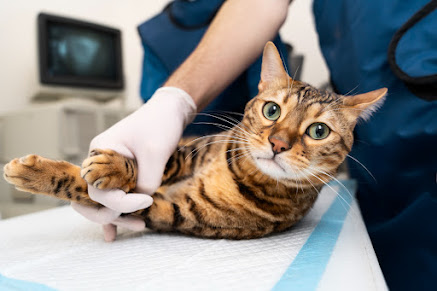Quaker Parakeets: The Fascinating Birds That Will Steal Your Heart
The Quaker parakeet, also known as the Monk parakeet or the Quaker parrot, is a captivating and unique bird species that has captured the hearts of many avian enthusiasts around the world. With its charming personality, vibrant plumage, and remarkable intelligence, the Quaker parakeet has become a popular choice for bird lovers as both a pet and a companion. In this article, we will delve into the fascinating world of Quaker parakeets, exploring their natural history, physical characteristics, behavior, care requirements, and much more.
Introduction to Quaker Parakeets:
The Quaker parakeet (Myiopsitta monachus) is a small to medium-sized parrot that is native to South America. They are found primarily in Argentina, Bolivia, Brazil, and Uruguay. Quaker parakeets are known for their distinctive green plumage, which is complemented by a gray face and chest, as well as a bright blue flight feathers and tail. Their average lifespan ranges from 20 to 30 years, making them a long-term commitment for pet owners.
Physical Characteristics:
Quaker parakeets typically measure about 11 to 12 inches (28 to 30 cm) in length, with males and females being similar in size. They have a stocky build and a strong beak that they use for various activities such as foraging and climbing. One of the unique features of Quaker parakeets is their ability to raise and lower the feathers on their heads, which adds to their expressive and inquisitive nature.
Personality and Behavior:
Quaker parakeets are renowned for their intelligent and social nature. They are highly curious birds and are known to be excellent problem solvers. Their playful and mischievous personalities often make them the center of attention in any household. Quakers are also known for their ability to mimic human speech and other sounds, although their vocalizations may not be as clear or extensive as some larger parrot species.
Quaker parakeets are highly social and thrive on interaction with their human caregivers. They are known to develop strong bonds with their owners and can become quite affectionate. However, they also have an independent streak and require mental stimulation and plenty of toys to keep them engaged. Quakers enjoy being part of the family and will often seek out opportunities to participate in household activities.
Housing and Cage Requirements:
When it comes to housing Quaker parakeets, a spacious cage is essential. The cage should be large enough to allow them to stretch their wings fully and move around comfortably. A minimum size for a single Quaker parakeet is 24 x 24 x 24 inches (60 x 60 x 60 cm). However, providing a larger cage is always preferable, as it gives the bird more room to exercise and explore.
The cage should be equipped with a variety of perches of different diameters to help exercise their feet and prevent foot problems. It's important to place the perches at various heights to encourage natural movement and exercise. Additionally, providing toys, puzzles, and foraging opportunities will help keep their active minds stimulated.
Diet and Nutrition:
A balanced and nutritious diet is crucial for the health and well-being of Quaker parakeets. Their diet should consist of a variety of fresh fruits, vegetables, high-quality pellets, and a moderate amount of seeds. Leafy greens such as kale, spinach, and Swiss chard are excellent sources of vitamins and minerals. Fruits like apples, berries, and melons can be offered as occasional treats.
It is important to note that seeds should only make up a small portion of their diet, as an excess of fatty seeds can lead to obesity and other health issues. Fresh, clean water should be available at all times, and the water container should be changed daily to ensure hygiene.
Exercise and Enrichment:
Quaker parakeets are active birds that require regular exercise to maintain their physical and mental health. They should be provided with ample out-of-cage time in a safe and supervised environment. A play gym or a designated area with toys and perches will encourage them to explore, climb, and engage in various activities.
Quaker parakeets are known for their love of chewing, so providing them with safe chew toys made from bird-safe materials like wood or untreated natural fibers is important. Regular interaction and positive reinforcement training can also help keep their minds sharp and their behavior in check.
Common Health Issues:
Like any other pet, Quaker parakeets are prone to certain health issues. Obesity, fatty liver disease, and vitamin deficiencies are common problems that can be avoided with a well-balanced diet and regular exercise. It is essential to provide them with a proper avian veterinarian for routine check-ups and vaccinations.
Quakers are also known to be susceptible to respiratory infections, so it is crucial to maintain a clean and hygienic environment. Regular cleaning of the cage, perches, and toys, as well as good ventilation, will help prevent the buildup of harmful bacteria or fungi.
Legal and Ethical Considerations:
In some regions, Quaker parakeets are considered invasive species due to their ability to adapt and establish large communal nests in urban areas. It is important to check local regulations before considering acquiring a Quaker parakeet as a pet. Additionally, potential owners should ensure that they are obtaining a Quaker parakeet from a reputable breeder or rescue organization and not contributing to the illegal wildlife trade.
Conclusion:
Quaker parakeets are remarkable and engaging birds that can make wonderful companions for those who are willing to provide them with the care, attention, and mental stimulation they require. With their intelligence, charm, and unique personalities, Quaker parakeets have won the hearts of bird lovers worldwide. By understanding their natural behaviors, meeting their dietary and housing needs, and providing them with plenty of love and interaction, you can establish a fulfilling and lasting bond with these delightful feathered friends.






